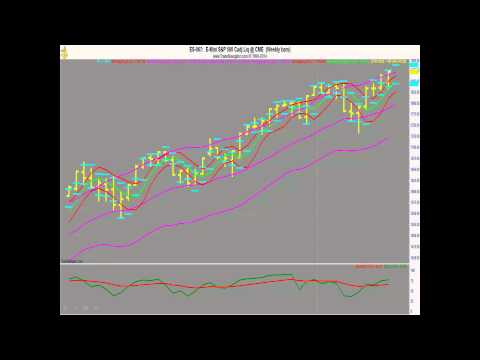.jpg)
Follow
Us:    
|
The Little Black Book
of Momentum Setups
Joe Duffy has just released a powerful new eBook: The Little Black Book of Momentum Setups.
Inside, he explains exactly how to capture some of the most profitable opportunities in any market.
Just Tap Here to Grab It
Inside you’ll discover:
* How to find momentum in any market
* The trade setups that really work in powerful moves
* The truth about trends that no one talks about
* Tons of chart examples so you can see how this works in real markets
* The Risk/Reward myth that has likely cost you a ton of money
* And a whole lot more...
Tap Here to Download
Right Away!

|
|
Thomas DeMark has spent 28 years in the investment business. DeMark has been a consultant to large hedge fund and mutual fund managers, and his many clients have included George Soros, Paul Tudor Jones, Union Carbide, IBM and many others. The featured speaker at numerous conferences, he has also written several articles for financial magazines and two successful books on market timing, The New Science of Technical Analysis and New Market Timing Techniques.
 |
Tom DeMark's
The New Science of
Technical Analysis
"This may be the most imaginative, informative and valuable investment book ever written!"

Tom's breakthrough methodology incorporates a number of new technical indicators that, when used appropriately, are incredibly accurate at forecasting changes in market direction. These indicators are price anticipatory. They consistently and accurately identify market entry and exit points to coincide exactly with upcoming turning points in market trends.
While highly scientific, Tom's indicators are startling in their simplicity. You don't need a Ph.D. in math to understand or apply them. All you need is a basic understanding of the markets and the dynamics of price movement.
Learn to Trade the DeMark Way
The New Science of
Technical Analysis
|
|

Better
Business Bureau
 |
|
Click on authors name
to learn more
|
| |
|
|
Investors get sucked into the glitz and glamour of an IPO all the time. Many think this is the stock that’ll make them rich. Unfortunately, many learn the hard way that’s not the case.
That’s because in many cases, in the end, IPOs are all about increasing value for owners, institutions and private investors. When it comes to any IPO, if it’s overly hyped with a gargantuan valuation, stay on the sidelines and wait for the likely pullback. This week, we look at the smart way to profit off an IPO.
Lee Gettess provides our next bit of insight with a video covering his market expectations for the next week.
Then, Inside Trading brings us an article from Tom DeMark who talks about the methods he uses to calculate price projections using trend lines.
Last, Wendy Kirkland offers her Prime Entry Profits (PEP) Rally Newsletter.
Enjoy!
Adrienne LaVigne
TradeWins Publishing
 |
|
Make Money from IPOs without Buying an IPO
by
TradeWins Publishing
In late 2015, Ferrari (RACE) raced onto the market floor at a high of $60 a share.
Here was a $12 billion IPO rolling on to the showroom floor, oversubscribed 10 times over. Investors were excited. Anticipation was high. The press noted it could be a hot runner even though the company had just said net profits fell 34%.
Unfortunately, just as we had expected, the IPO was a flop.
Shares would plummet from $60 to $33 in days. Millions of dollars were wiped out.
But this is nothing new. Investors get sucked into the glitz and glamour of an IPO all the time.
Many think this is the stock that’ll make them rich.
Unfortunately, many learn the hard way that’s not the case.
When Twitter had its IPO, it was over-subscribed and over-hyped, as well.
Without a profit, it hit the market at 70x sales with a wild $35 billion market cap. But that didn't stop investors from crowding the stock out of the gate, though. After being priced at $26 the night before, the stock began trading at $45.10 a share before jumping to $50.09. Investors chased it, only to watch Twitter close the day at $44.90 – 73% above the IPO price.
While the stock would eventually be chased as high as $75, once the hype died, Twitter fell to $30 a share – another costly error.
When Groupon IPO’d in 2012, it was considered one of the hottest opportunities on the year. Analysts upgraded the stock left and right. Investors rushed to buy, sending the stock to $31.14 out of the gate. It would lose 50% of its value that same month.
Make Money from IPOs
|
Lee
Gettess' Market Sense
by Lee Gettess
Lee
Gettess is a top trader who is excited
to bring you his video newsletter.
Each week, Lee will share his predictions
on what he anticipates from the bond
and S&P markets.
Watch
Video
|
TD Price Projections
by
Thomas DeMark
The following
is an excerpt from Tom DeMark's The New Science of Technical Analysis
There are three distinct methods to calculate price projections once a trendline is penetrated validly; I call them TD Price Projectors. The particular technique selected is a function of the degree of precision and accuracy required by the user.
Early on, I concluded that important supply price pivot points were identified once a high was recorded that was not exceeded on the upside the day immediately before as well as the day immediately after. Conversely, to define demand price pivot points, just the opposite approach was employed: a low was recorded that was not exceeded on the downside the day immediately before as well as the day immediately after. This made sense to me; these were critical days that proved to be trend turning points in price activity. Supply overcame demand and price declined, and demand overcame supply and price advanced. I have labeled these key price points as TD Points.
Once the TD Points are identified, they are connected to construct TD Supply Lines and TD Demand Lines (TD Lines). The real attraction of this method of point selection was that it was dynamic. In other words, the market itself announced any changes in the supply-demand equilibrium equation by continuously resetting TD Points. Consequently, TD Lines are constantly being revised as more recent TD Points are being formed. The importance of the selection of the most recent TD Point and its connection to the second most recent TD Point as well as the construction of the TD Line itself becomes apparent.
TD Price Projections
|
Prime Entry Profits (PEP)
by Wendy Kirkland
Every week Wendy publishes her Prime Entry Profits (PEP) Rally Newsletter. The following is her thought for the week, along with what she expects this week in trading.
PEP Thought for the Week: If there's a lack of money in your life, understand that feeling worried, envious, jealous, disappointed, discouraged, doubtful or fearful about money can never bring more money to you, because those feelings come from a lack of gratitude for the money you have. Be thankful for what you have and "Know" that more is coming.
This Week in Trading: Indices zig-zagged back and forth yesterday. The moves were short and fast. The DOW closed at +9, Nasdaq +41, S&P +7.
Be sure to check earnings dates.
CSX- CSX Corp - P3.5
EWZ- iShares Brazil - P3.5
GDX- Van Eck Gold Miners - P3.5
JCI- Johnson Controls - P3.5
MRK- Merck - P3
MU- Micron Technologies - P3.5
QCOM- QUALCOMM - P3
TECK-Tech Resources - P3.5
To Learn More Click Here
|
|

.jpg)




